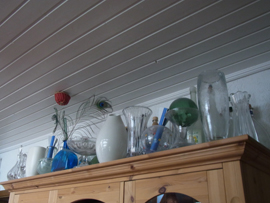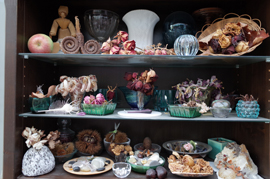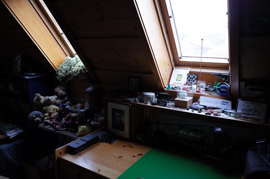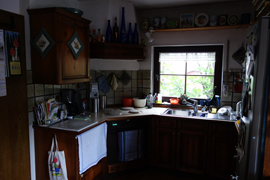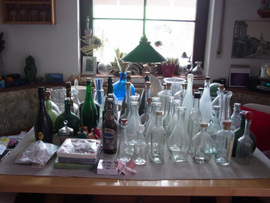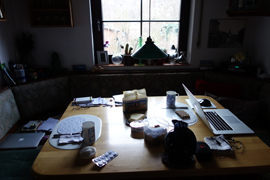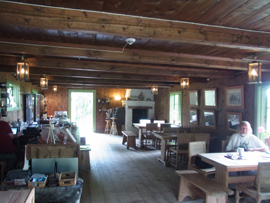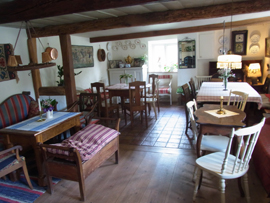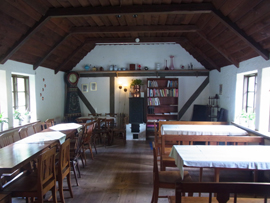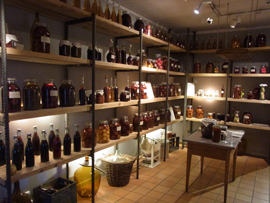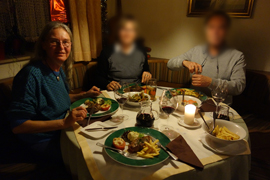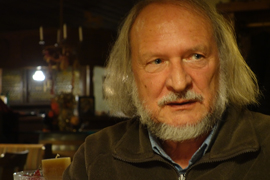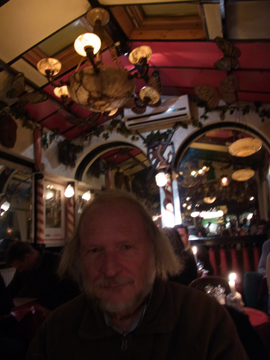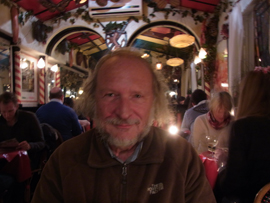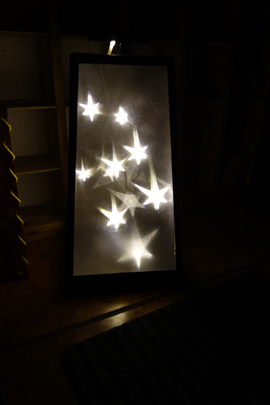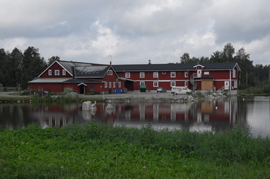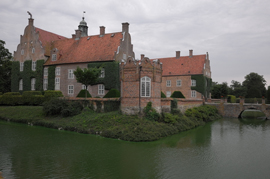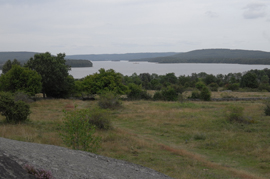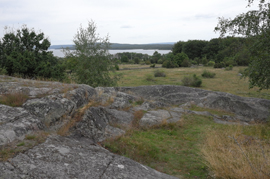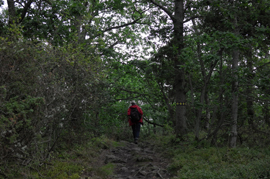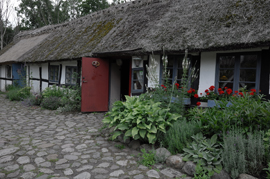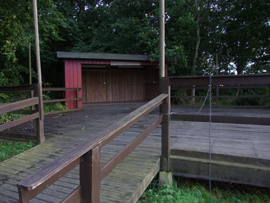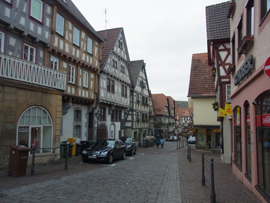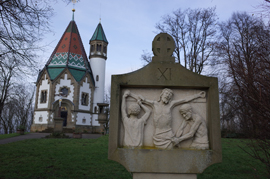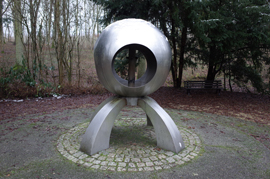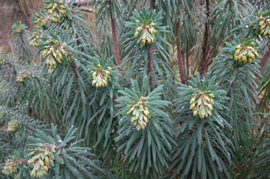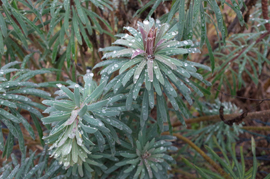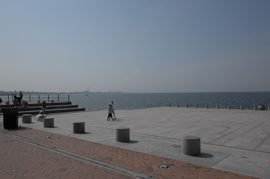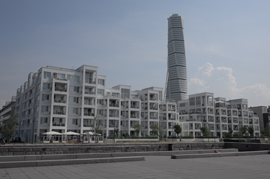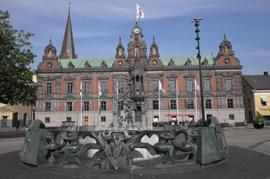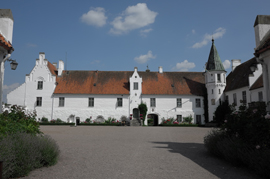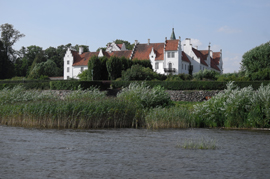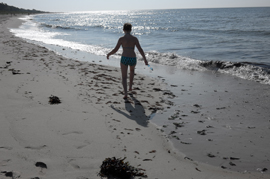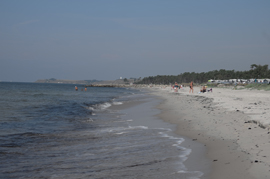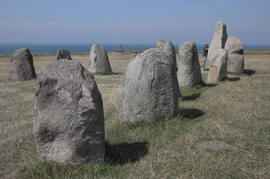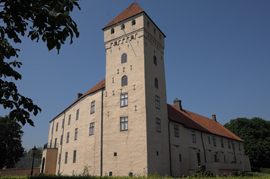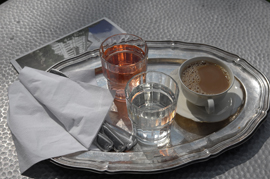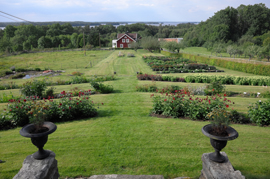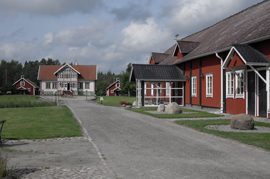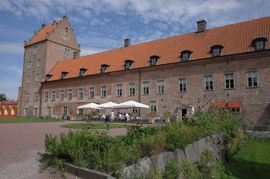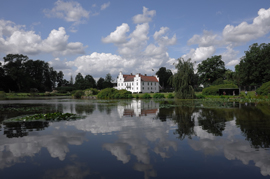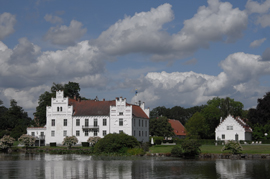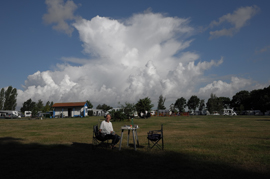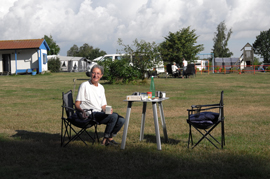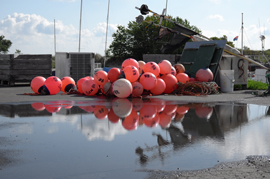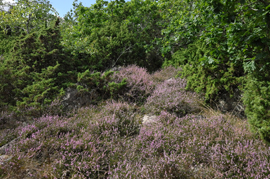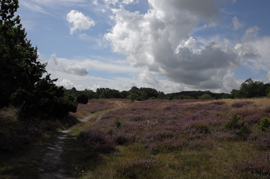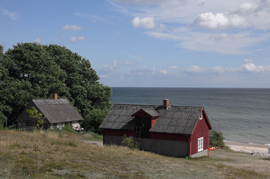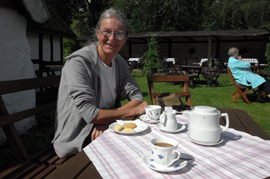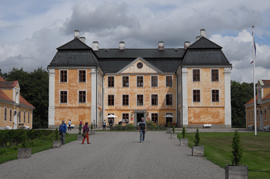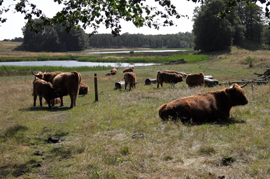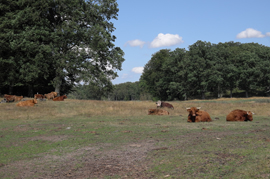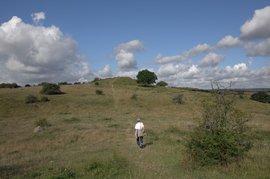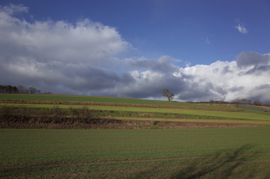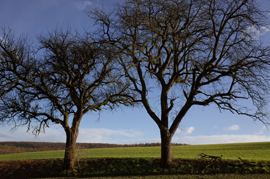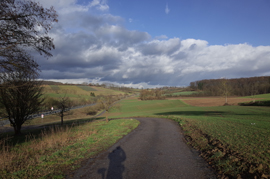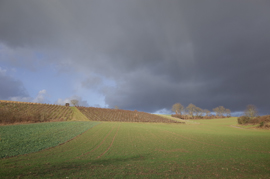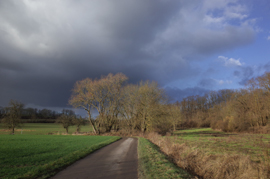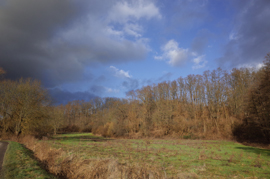General: Physical Limits of Photography: Insufficient Light - Part 5
Part 1 | Part 2 | Part 3 | Part 4 | Part 5 | Part 6 | Part 7
Examples of Conditions of Insufficient Light - General Situations | References
In this series of articles, I will describe an example of where photography is reaching the limits of physics, namely, when light is scarce. Many photographers expect even in this case that their camera delivers perfect photos. In this series, I will try to explain why this is not possible. And I would also like to address the differences between large and small sensors, because I have the impression that many owners of compact cameras expect too much from their small-sensor cameras, among others, because they ignore or do not know what the difference implies.
The first part in the series serves as an introduction to the topic, asks for reasons for unsatisfactory, particularly blurry, photos, and discusses possible "countermeasures". In the second and third parts, which are supplemented by additional pages with test images, I compare cameras with sensors of different sizes with respect to their performance at different ISO values. In the fourth part, I present the concept of an "exposure value" (EV) as a measure of the amount of light that is available for a photo and present sample photos for illustration. In this fifth and in the sixth part, I present examples of situations in which only little light is available. For illustration, I provide the exposure values and other photographic data. In the seventh and last part, I try to summarize the results.
Examples of Conditions of Insufficient Light - General Situations
Now I would like to discuss and show some more general practical examples. For the example photos, I list the exposure level (EV) as given by the camera, shutter speed, aperture, and ISO value to give an impression of the existing brightness and thus, the available photographic options.
Interior Shots in One's Own or Someone Else's Apartment (Daylight, Mixed Light)
The following case is certainly the most important one for most photographers: You want to take interior shots - with or without people - in daylight or mixed light. When there are no people, you could use a tripod to prevent camera shake from potentially long exposure times. When there are people, this is also possible, but in practice you will rarely make use of it. Often, the people being photographed are sitting. This is the simpler case, because, in this case, people will move little or not at all. This setting also allows for longer exposure times (and possibly even for the use of a tripod). It may be necessary to ask people to keep still and smile for the camera - these are then the typical "asked" shots...
However, if you photograph people, especially children, in motion, you will need shorter exposure times to avoid blur. This will often force you to use higher ISO values. And then the question arises whether your camera still provides usable images when using these ISO values. Sometimes, however, motion blur may not be distracting and bother you - this depends very much on the subject and the photographers intention.
With "mixed light" I mean that artificial light supplements daylight and accentuates or brightens up specific locations. This is why there are no major differences in the amount of light between daylight and mixed light. And if mixed light should be a little bit brighter, that's only useful...
According to the exposure value table in Part 2, you can expect exposure levels of EV 5-7 for interiors, and EV 7-8 in offices. Of course, it can always be darker - and in the vicinity of large windows brighter as well. My own examples in Part 2 are for the most part in the range of EV 5-7, in some cases even lower (down to EV 1.3). Here are some example photos of purely static interior scenes, together with their exposure data (no exposure compensation):
EV 4.6: 0.3 s, f/4, ISO 200 (fuzzy) (CX4) |
EV 4.9: 1/30 s, f/2.8, ISO 800 (GR) |
EV 6.5: 1/90 s, f/4, ISO 1600
(GR) |
EV 3.7: 1/8 s, f/1.8, ISO 200
(RX100) |
EV 6.5: 1/10 s, f/4.2, ISO 200 (CX4) |
EV 5,6: 1/30 s, f/1,8, ISO 200
(RX100) |
EV 5.5: 1/5 s, f/4.3, ISO 200 (fuzzy) (CX4) |
EV 5.4: 1/7 s, f/3.5, ISO 200 (fuzzy)
(CX4) |
EV 5.6: 1/8 s, f/3.5, ISO 200 (CX4) |
Here is an excerpt from the exposure value table (transposed):
| f/2.8 | ISO |
f/5.6 | ISO |
|||||||||||||
| EV | 100 | 200 | 400 | 800 | 1600 | 3200 | 6400 | EV | 100 | 200 | 400 | 800 | 1600 | 3200 | 6400 | |
| 5 | 1/4 | 1/8 | 1/15 | 1/30 | 1/60 | 1/125 | 1/250 | 5 | 1 | 1/2 | 1/4 | 1/8 | 1/15 | 1/30 | 1/60 | |
| 6 | 1/8 | 1/15 | 1/30 | 1/60 | 1/125 | 1/250 | 1/500 | 6 | 1/2 | 1/4 | 1/8 | 1/15 | 1/30 | 1/60 | 1/125 | |
| 7 | 1/15 | 1/30 | 1/60 | 1/125 | 1/250 | 1/500 | 1/1000 | 7 | 1/4 | 1/8 | 1/15 | 1/30 | 1/60 | 1/125 | 1/250 | |
At at aperture value of f/2.8 you still fare quite well with ISO 800 under these lighting conditions. At an aperture value of f/5.6, however, even ISO 1600 is "tight" in many situations. Interior shots without using a flash (or stand) therefore make this an almost impossible task for cameras with small sensors...
Warning: Many zoom lenses get considerably slower at the telephoto end. So if you "zoom-in" on people, it can happen that the light is no longer sufficient for shutter speeds that can be held by hand (e.g. 1/30 s) - even if this was still possible for shooting at the wide end. A respective example in artificial light is presented below.
Interior Shots in One's Own or Someone Else's Apartment (Artificial Light)
Similar considerations apply to indoor shots using artificial light as to those using daylight (I do not want to touch white balance issues here). However, there is usually less light available under tungsten than in daylight, at least if the typical ceiling lighting is used.
When you take photos of light sources such as the star lamp in one of the sample photos below, shorter exposure times are possible as when you shoot scenes in rooms with diffuse lighting. Here it is usually not a problem when the environment of the light source is dark. If you put objects like the onion soup in the photo below directly under a lamp, you naturally achieve higher exposure levels than usual.
Warning: Many zoom lenses get considerably slower at the telephoto end. So if you "zoom-in" on people, it can happen that the light is no longer sufficient for shutter speeds that can be held by hand (e.g. 1/30 s) - even if this was still possible for shooting at the wide end.
Example: The photos in the first row at the center and to the right are both taken with ISO 1600, but with different focal lengths (28 mm and 92 mm). In the first case, a larger aperture (f/2.2) could be chosen than in the second one (f/4.9). Accordingly, the first photo (1/100 sec) is OK, while the second (1/13 s) is blurred.
EV 4.8: 1/9 s, f/3.5, ISO 400 (CX4) |
EV 4.9: 1/100 s, f/2.2, ISO 1600 (RX100) |
EV 4.3: 1/13 s, f/4.9, ISO 1600 (RX100) |
EV 4.2: 0.3 s, f/3.5, ISO 200, EV -0.7 (CX4,
fuzzy) |
EV 3.6: 1/2 s, f/3.5, ISO 200, EV -0.7 (CX4,
fuzzy) |
EV 4,6: 1/30 s, f/1.8, ISO 400 (RX100) |
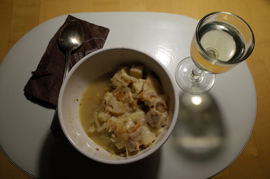 |
||
EV 8.5: 1/180 s, f/5.6, ISO 1600 (GR) |
For the exposure values, practically the same sub-table can be used as for interiors in daylight. However, I complemented it with EV 4:
| f/2.8 | ISO |
f/5.6 | ISO |
|||||||||||||
| EV | 100 | 200 | 400 | 800 | 1600 | 3200 | 6400 | EV | 100 | 200 | 400 | 800 | 1600 | 3200 | 6400 | |
| 4 | 1/2 | 1/4 | 1/8 | 1/15 | 1/30 | 1/60 | 1/125 | 4 | 2 | 1 | 1/2 | 1/4 | 1/8 | 1/15 | 1/30 | |
| 5 | 1/4 | 1/8 | 1/15 | 1/30 | 1/60 | 1/125 | 1/250 | 5 | 1 | 1/2 | 1/4 | 1/8 | 1/15 | 1/30 | 1/60 | |
| 6 | 1/8 | 1/15 | 1/30 | 1/60 | 1/125 | 1/250 | 1/500 | 6 | 1/2 | 1/4 | 1/8 | 1/15 | 1/30 | 1/60 | 1/125 | |
| 7 | 1/15 | 1/30 | 1/60 | 1/125 | 1/250 | 1/500 | 1/1000 | 7 | 1/4 | 1/8 | 1/15 | 1/30 | 1/60 | 1/125 | 1/250 | |
Outdoor Shots at Dull Days (Morning, Afternoon, Evening)
Apart from special lighting situations, outdoor shots on dull and cloudy bright days (overcast sky) usually do not present any major exposure problems. According to the exposure value table on Page 2, you can expect an exposure value in the order of EV 12-13. Based on my own experience, I would rather consider an exposure value range of EV 10-13 for these shots, but I have also found values beyond EV 13 (see the examples below). In the evening, it is, of course, darker (in the examples below, there is an evening shot with EV 10), and there may be other outdoor conditions having lower light levels.
Especially in the forest, it can, of course, be much darker. There you are more in the exposure value range for interiors - and may face the issue of camera shake. Such outdoor shots are among the "special" ones, which may require extra attention (such as the use of a tripod). Often, I found out only afterwards that my forest shots were blurry... I cover forest shots on the next page.
EV 13.6: 1/320 s, f/6.3, ISO 100 (LXV) |
EV 11.3: 1/640 s, f/5.6, ISO 800 (LXV) |
EV 13.3: 1/1600 s, f/7.1, ISO 800 (LXV) |
EV 12.6: 1/800 s, f/8, ISO 800 (LXV) |
EV 11.1: 1/320 s, f/5.2, ISO 400 (LXV) |
EV 12.6: 1/250 s, f/5.0, ISO 100 (LXV) |
EV 10: 1/84 s, f/3.5, ISO 100, EV -2 (CX4) |
EV 11.5: 1/233 s, f/3.5, ISO 100 (CX4) |
EV 12.3: 1/640 s, f/5.6, ISO 400 (GR) |
EV 8.5: 1/90 s, f/4, ISO 400 (GR) |
EV 9.5: 1/180 s, f/5.6, ISO 800 (GR) |
EV 9.9: 1/250 s, f/5.6, ISO 800 (GR) |
Here is an excerpt from the exposure value table (transposed):
| f/2.8 | ISO |
f/5.6 | ISO |
|||||||||||||
| EV | 100 | 200 | 400 | 800 | 1600 | 3200 | 6400 | EV | 100 | 200 | 400 | 800 | 1600 | 3200 | 6400 | |
| 10 | 1/125 | 1/250 | 1/500 | 1/1000 | 1/2000 | 1/4000 | ... | 10 | 1/30 | 1/60 | 1/125 | 1/250 | 1/500 | 1/1000 | 1/2000 | |
| 11 | 1/250 | 1/500 | 1/1000 | 1/2000 | 1/4000 | ... | ... | 11 | 1/60 | 1/125 | 1/250 | 1/500 | 1/1000 | 1/2000 | 1/4000 | |
| 12 | 1/500 | 1/1000 | 1/2000 | 1/4000 | ... | ... | ... | 12 | 1/125 | 1/250 | 1/500 | 1/1000 | 1/2000 | 1/4000 | ... | |
| 13 | 1/1000 | 1/2000 | 1/4000 | ... | ... | ... | ... | 13 | 1/250 | 1/500 | 1/1000 | 1/2000 | 1/4000 | ... | ... | |
The table above indicates that one should avoid higher ISO values under these conditions, because, under certain circumstances, especially at large apertures, the photos may be overexposed (if it happends at large apertures, you can stop down...). This problem is, however, more prevalent on sunny days.
Outdoor Shots at Bright Days
I present this case only because it may actually have the opposite issue as many shooting situations listed here: The light may be too bright for the camera and therefore, overexposure my result (the aperture cannot be closed any further, a shorter exposure time cannot be set - or both). Some cameras, like the Ricoh GR, have a built-in gray filter (sometimes this corresponds 3 f-stops) that can be activated automatically or manually. Cameras with small sensors often have the problem that the aperture scale ends already at f/8 or f/11, to avoid blur caused by diffraction and thus, have a limited aperture range.
According to the exposure value table of Page 2, you can expect exposure values in the order of 14-15 EV. In my experience I would rather expect an exposure value range of EV 13-16.
Finally, I would like to point out that brightness can vary greatly during the day - and also between the seasons of the year: In winter it is (at mid-latitudes) even at noon significantly darker than in summer. This can make a difference of several EV steps, but the example photos do not show this clearly (perhaps Swedish summers are not that bright...)
| Summer in Sweden (August 2014) | ||
EV 14.6: 1/2000 s, f/10, ISO 800 (LXV) |
EV 16.0: 1/2000 s, f/8, ISO 200 (LXV) |
EV 15.3: 1/1600 s, f/7.1, ISO 200 (LXV) |
EV 14.6: 1/1600 s, f/11, ISO 800 (LXV) |
EV 15.3: 1/1000 s, f/6.3, ISO 100 (LXV) |
EV 14.1: 1/500 s, f/6.0, ISO 100 (LXV) |
EV 15.6: 1/1250 s, f/6.3, ISO 100 (LXV) |
EV 15.0: 1/800 s, f/6.4, ISO 100 (LXV) |
EV 14.6: 1/800 s, f/5.6, ISO 100 (LXV) |
EV 15.3: 1/1000 s, f/6.3, ISO 100 (LXV) |
EV 16.0: 1/1600 s, f/6.3, ISO 100 (LXV) |
EV 13.3: 1/400 s, f/5.0, ISO 100 (LXV) |
EV 14.6: 1/640 s, f/6.3, ISO 100 (LXV) |
EV 14.6: 1/800 s, f/5.6, ISO 100 (LXV) |
EV 14.6: 1/640 s, f/6.3, ISO 100 (LXV) |
EV 15.6: 1/1250 s, f/6.4, ISO 100 (LXV) |
EV 15.6: 1/1250 s, f/6.3, ISO 100 (LXV) |
EV 14.0: 1/400 s, f/6.4, ISO 100 (LXV) |
EV 14.3: 1/500 s, f/6.4, ISO 100 (LXV) |
EV 13.0: 1/800 s, f/6.3, ISO 400 (LXV) |
EV 15.3: 1/2000 s, f/9.0, ISO 400 (LXV) |
EV 14.6: 1/1600 s, f/8, ISO 400 (LXV) |
EV 14.6: 1/1600 s, f/16, ISO 1600 (LXV) |
EV 14.7: 1/640 s, f/6.4, ISO 100 (LXV) |
EV 13.6: 1/1250 s, f/6.3, ISO 400 (LXV) |
EV 14.3: 1/1600 s, f/7.1, ISO 400 (LXV) |
EV 14.6: 1/640 s, f/6.3, ISO 100 (LXV) |
| Winter in Germany (February 2015) | ||
EV 14,3: 1/2000 s, f/6.3, ISO 400 (GR) |
EV 13,6: 1/750 s, f/4, ISO 100 (GR) |
EV 14,0: 1/1000 s, f/4, ISO100 (GR) |
EV 13,0: 1/500 s, f/4, ISO 100 (GR) |
EV 12,9: 1/1000 s, f/5.6, ISO 400 (GR) |
EV 13,3: 1/1250 s, f/5.6, ISO 400 (GR) |
Here is an excerpt from the exposure value table (transposed):
| f/2.8 | ISO |
f/11 | ISO |
|||||||||||||
| EV | 100 | 200 | 400 | 800 | 1600 | 3200 | 6400 | EV | 100 | 200 | 400 | 800 | 1600 | 3200 | 6400 | |
| 13 | 1/1000 | 1/2000 | 1/4000 | ... | ... | ... | ... | 13 | 1/60 | 1/125 | 1/250 | 1/500 | 1/1000 | 1/2000 | 1/4000 | |
| 14 | 1/2000 | 1/4000 | ... | ... | ... | ... | ... | 14 | 1/125 | 1/250 | 1/500 | 1/1000 | 1/2000 | 1/4000 | ... | |
| 15 | 1/4000 | ... | ... | ... | ... | ... | ... | 15 | 1/250 | 1/500 | 1/1000 | 1/2000 | 1/4000 | ... | ... | |
| 16 | ... | ... | ... | ... | ... | ... | ... | 16 | 1/500 | 1/1000 | 1/2000 | 1/4000 | ... | ... | ... | |
| f/5.6 | ISO |
f/22 | ISO |
|||||||||||||
| EV | 100 | 200 | 400 | 800 | 1600 | 3200 | 6400 | EV | 100 | 200 | 400 | 800 | 1600 | 3200 | 6400 | |
| 13 | 1/250 | 1/500 | 1/1000 | 1/2000 | 1/4000 | ... | ... | 13 | 1/15 | 1/30 |
1/60 | 1/125 | 1/250 | 1/500 | 1/1000 | |
| 14 | 1/500 | 1/1000 | 1/2000 | 1/4000 | ... | ... | ... | 14 | 1/30 | 1/60 | 1/125 | 1/250 | 1/500 | 1/1000 | 1/2000 | |
| 15 | 1/1000 | 1/2000 | 1/4000 | ... | ... | ... | ... | 15 | 1/60 | 1/125 | 1/250 | 1/500 | 1/1000 | 1/2000 | 1/4000 | |
| 16 | 1/2000 | 1/4000 | ... | ... | ... | ... | ... | 16 | 1/125 | 1/250 | 1/500 | 1/1000 | 1/2000 | 1/4000 | ... | |
The table above shows that, at higher exposure levels, you should not only avoid higher ISO values, but also large apertures to prevent overexposure. In practice, I have experienced this problem mainly when shooting against the sky and against the sun. It does not occur as often as the table seems to suggest. Cameras with small sensors typically do not provide aperture values beyond f/11 to avoid diffraction blur.
References
- Elmar Baumann: Lichtwert, Lichtwert-Diagramm (www.elmar-baumann.de/fotografie/fragen/lichtwert.html) (in German)
| 14.02.2016 |
